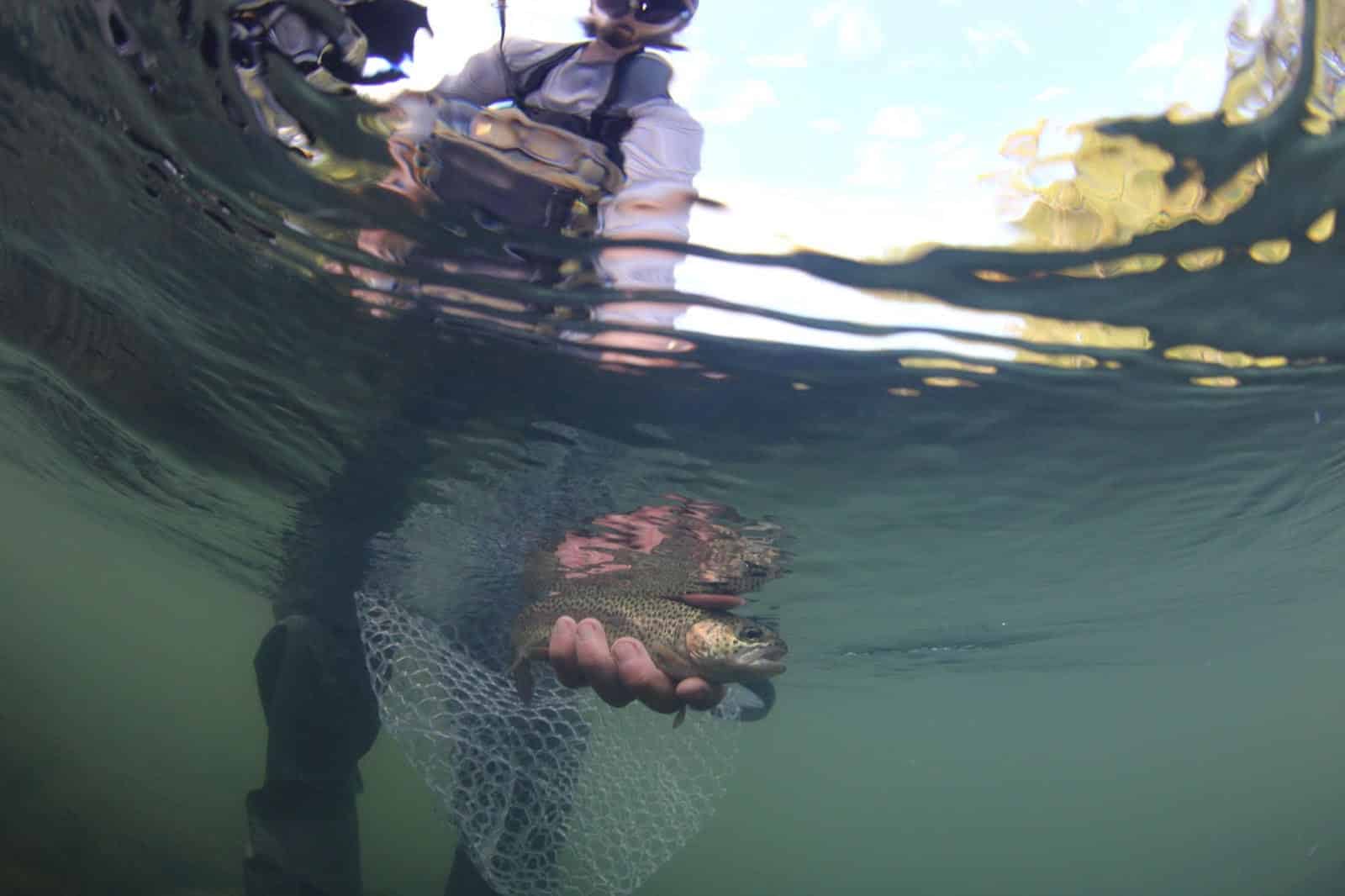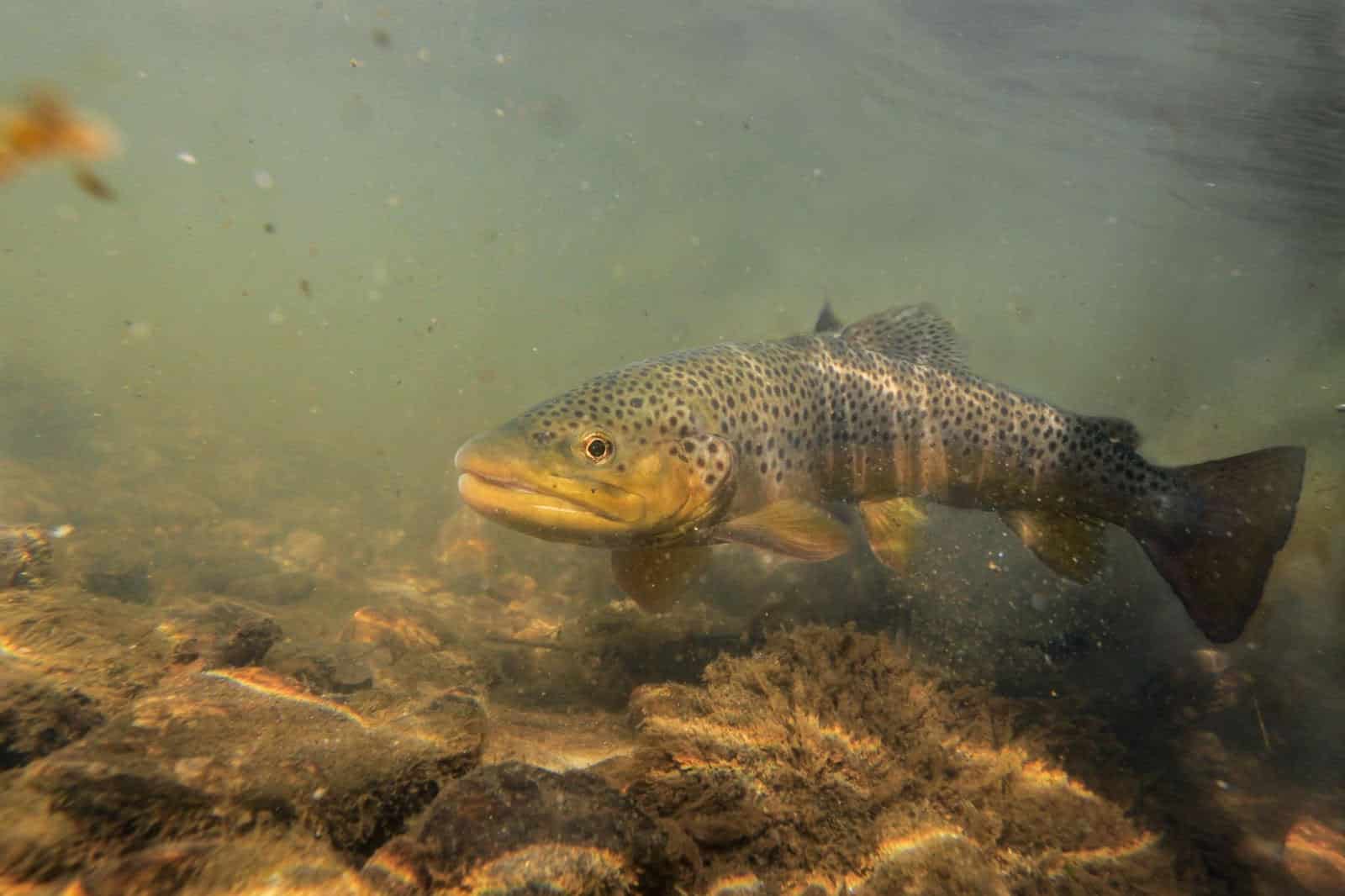Help trout keep their cool
ON 07-01-2024

HEBER SPRINGS — Trout anglers looking to beat the heat may want to add a little more precaution than usual to their catch-and-release regimen during summer, particularly on The Little Red River, which has seen temperatures exceeding the comfort level for rainbow and brown trout.
Christy Graham, Arkansas Game and Fish Commission Trout Management Program supervisor based in Mountain Home, has worked with the state’s trophy-class trout fisheries for nearly 15 years. During that time, temperature monitoring throughout Arkansas’s famous tailwater fisheries always takes top priority in summer.
“We conduct daily checks of water quality conditions and work with the U.S. Army Corps of Engineers and Southwestern Power Administration to address any concerns we have about the amount of water being released,” Graham said.
According to the American Fisheries Society’s “Trout and Char of the World,” most trout species grow best at temperatures between about 53 and 66 degrees. Once water warms too much (78 to 86 degrees, depending upon species) trout can perish from the hostile environment. But it’s not a hard-and-fast rule, as many variables come into play that can drop that critical temperature a bit lower.
Graham says it’s not just the heat but, more importantly, the amount of oxygen in the water that plays a critical role in fish health during summer.
“Fish size, the length of time the fish has endured the hot water and any sudden rise that can shock the system all come into play, and that’s not even counting the added stress that comes from a long fight on an angler’s line,” Graham said.

According to Graham a key surface water temperature anglers should keep in mind is 68 degrees. At that mark, added stress from long fights can increase mortality substantially.
“At that point, if you’re still wanting to fish the same waters, you should consider keeping what you catch if it’s legal to do so,” Graham said. “I know there’s a very strong catch-and-release ethic with our avid trout anglers, but there’s nothing wrong with keeping a few fish occasionally for a meal. Survival rates from fish that came from 68-degree and warmer water are pretty low, and we do need some harvest of trout to keep the system in balance and increase growth rates of the fish left.”
Graham says the best way to keep an eye on the water temperature is to carry a small pocket thermometer and make periodic checks where you are fishing.
“If you come across that 68-degree threshold, you may want to move upstream to cooler water,” Graham said. “The fishing is likely to be better where the trout are more comfortable and in a feeding mood anyway.”
Even at water temperature ranging 65 to 67 degrees, anglers may consider only fishing during the morning and using heavier gear to get fish in quickly instead of adding undue stress from long fights.
“Avoid fighting fish to the point of exhaustion and keep the fish in the water as much as possible if you plan to release it,” Graham said. “Even pulling it from the water for pictures can add enough stress to tip the scales and increase the chance of mortality after release.”
Angling is still one of the best ways to beat the summer heat, and the cold water of Arkansas’s trout streams make an ideal setting to enjoy a relaxing day on the water away from the noise of boats and beachgoers. With a few precautions, anglers can enjoy this resource and save the experience for the next generation.
####
CUTLINES:
ANGLER WITH TROUT
Keeping fights short and keeping the fish in the water as much as possible can help trout recover from catch-and-release efforts during summer.
BROWN TROUT
Brown trout and rainbow trout both seek cooler water during summer, and anglers interested in releasing their catch should refrain from chasing fish in waters above 68 degrees.
Recent News

Arkansas Wildlife Weekly Fishing Report
Jul. 10, 2025

Lonoke aquaculturist named to AGFC
Jul. 10, 2025
Subscribe to Our Weekly Newsletter E-mails
Don’t miss another issue. Sign up now to receive the AGFC Wildlife Weekly Newsletter in your mailbox every Wednesday afternoon (Waterfowl Reports are published weekly during waterfowl season and periodically outside the season). Fishing Reports arrive on Thursdays. Fill in the following fields and hit submit. Thanks, and welcome!
